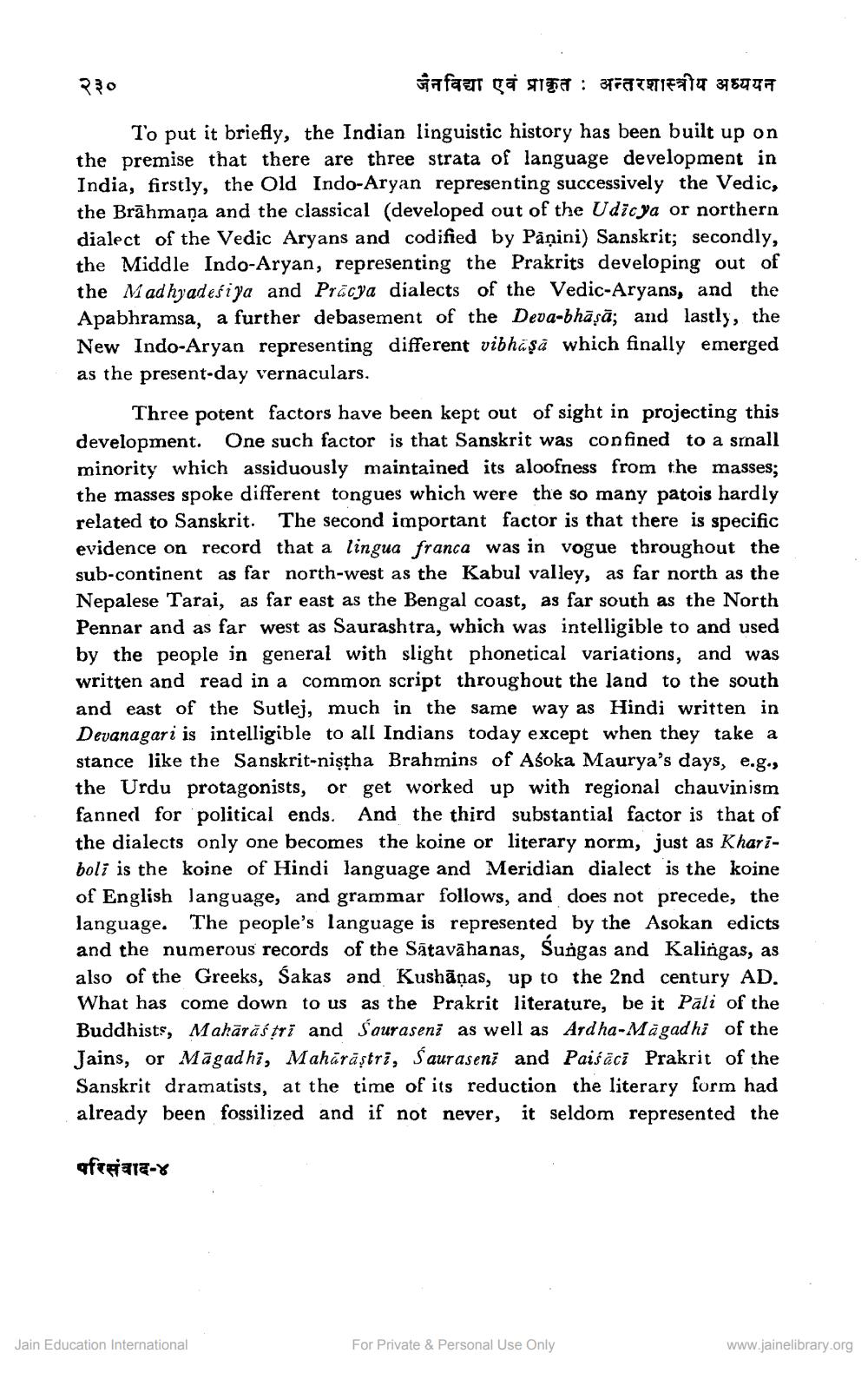Book Title: Prakrit A Review Author(s): Shashi Kant Publisher: Z_Jain_Vidya_evam_Prakrit_014026_HR.pdf View full book textPage 2
________________ २३० जैन विद्या एवं प्राकृत : अन्तरशास्त्रीय अध्ययन To put it briefly, the Indian linguistic history has been built up on the premise that there are three strata of language development in India, firstly, the Old Indo-Aryan representing successively the Vedic, the Brāhmaṇa and the classical (developed out of the Udicya or northern dialect of the Vedic Aryans and codified by Pāņini) Sanskrit; secondly, the Middle Indo-Aryan, representing the Prakrits developing out of the Madhyadesiya and Pracya dialects of the Vedic-Aryans, and the Apabhramsa, a further debasement of the Deva-bhāṣā; and lastly, the New Indo-Aryan representing different vibhäşå which finally emerged as the present-day vernaculars. Three potent factors have been kept out of sight in projecting this development. One such factor is that Sanskrit was confined to a small minority which assiduously maintained its aloofness from the masses; the masses spoke different tongues which were the so many patois hardly related to Sanskrit. The second important factor is that there is specific evidence on record that a lingua franca was in vogue throughout the sub-continent as far north-west as the Kabul valley, as far north as the Nepalese Tarai, as far east as the Bengal coast, as far south as the North Pennar and as far west as Saurashtra, which was intelligible to and used by the people in general with slight phonetical variations, and was written and read in a common script throughout the land to the south and east of the Sutlej, much in the same way as Hindi written in Devanagari is intelligible to all Indians today except when they take a stance like the Sanskrit-niştha Brahmins of Asoka Maurya's days, e.g., the Urdu protagonists, or get worked up with regional chauvinism fanned for political ends. And the third substantial factor is that of the dialects only one becomes the koine or literary norm, just as Khariboli is the koine of Hindi language and Meridian dialect is the koine of English language, and grammar follows, and does not precede, the language. The people's language is represented by the Asokan edicts and the numerous records of the Sātavāhanas, Sungas and Kalingas, as also of the Greeks, Sakas and Kushānas, up to the 2nd century AD. What has come down to us as the Prakrit literature, be it Pali of the Buddhists, Mahārās tri and Sauraseni as well as Ardha-Māgadhi of the Jains, or Māgadhi, Mahārāştri, Sauraseni and Paisāci Prakrit of the Sanskrit dramatists, at the time of its reduction the literary form had already been fossilized and if not never, it seldom represented the परिसंवाद-४ Jain Education International For Private & Personal Use Only www.jainelibrary.orgPage Navigation
1 2 3 4 5 6 7
